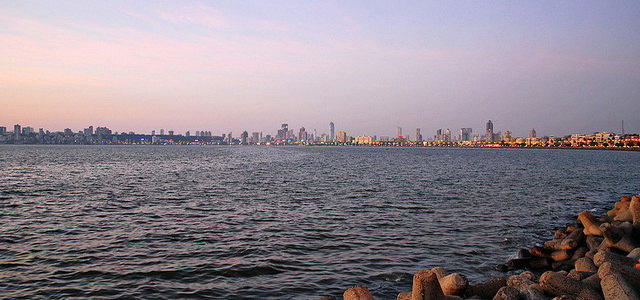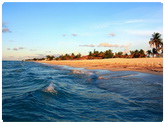| Quick Facts: | Arabian Sea |
|---|---|
| Countries: | Somalia Pakistan India Oman Yemen Djibouti Maldives |
| Major Ports: | Pakistan: Karachi Gwadar Oman: Salalah India: Kandla Nava Sheva Mumbai Mormugoa |
| Max. depth: | 4.652 m (15.262 ft) |
| Temperature: | Winter: 25°C Summer: 28°C |
| Salinity: | 37% |
| Area: | 3.862.000 km² (1.491.000 mi²) |
The Arabian Sea is situated in the northwestern part of the Indian Ocean. Its boundaries are: Somalia and the Arabian Peninsula on the west, Pakistan and India on the north, and the Malabar coast of India on the east.
Two arms of the Arabian Sea branch off westward: the Gulf of Aden, which runs into the Red Sea, and the Gulf of Oman, which runs into the Persian Gulf.
The Arabian sea is mostly a deep sea. Its maximum depth is 4,652 m (15,262 ft). The main ports located on the Arabian Sea are Mumbai in India, Karāchi in Pakistan, and Aden in Yemen.
There are many other important cities on the Arabian Sea like Muscat, Surat, Mangalore, Kozhikode, Kochi. Economically, the Arabian Sea is very transited by cargo ships, and pirates are also active in the sea.
Islands
The Arabian Sea has just a few islands, which lie not far from the coasts. Socotra Island, in the west, is about 150 miles (240 km) from the Somali coast, and the coral atolls of the Laccadives, in the east, are less than 150 miles off the coast of India.
Climate
Since ancient times the northeast monsoon in winter and the southwest monsoon in summer have facilitated direct crossings by sailing vessels. The winter or fair-weather monsoon is milder than the summer monsoon.
Storms are not common in winter, but the summer monsoons sometimes are very strong. Tropical cyclones occur in spring and fall, although with far less frequency than in the neighboring Bay of Bengal.





